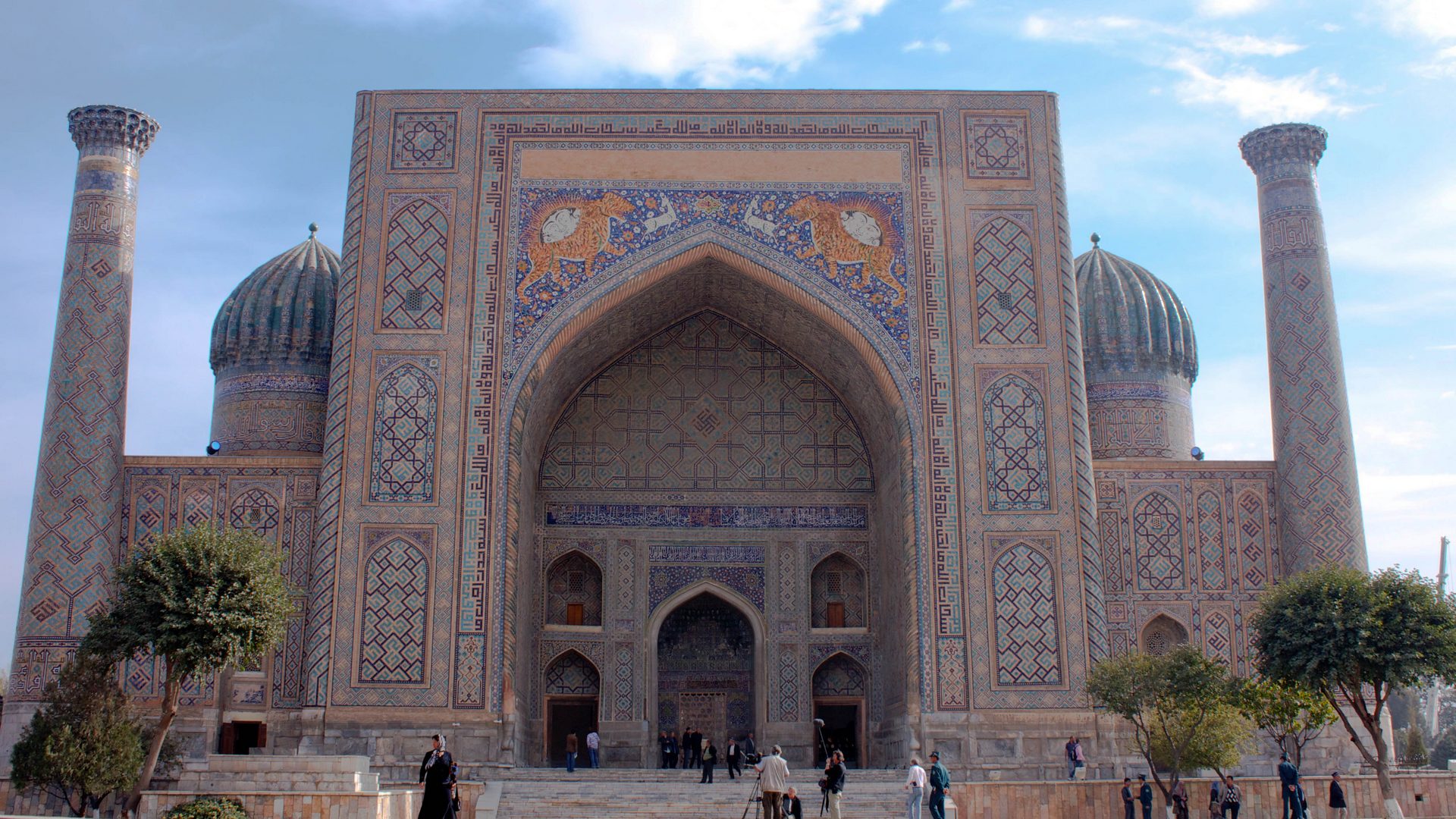Description
Property Name: Sher Dor Madrasa
Inventory No: 998-66-7
Date of infill of the inventory form: 2007-12-12
Country (State party): Uzbekistan
Province: Samarkand
Town:
Geographic coordinates: 39° 39′ 17.7″ N
66° 58′ 34.8″ E
Historic Period: Timurid
Year of Construction: 1619-36
Style: Timurid
Original Use: Madrasa
Current Use: Museum
Architect: Unknown
Significance
It is called Sher Dor (The One with Lions) Mardasa referring to the beasts of prey depicted on its tympana. The new madrasa was intended by the city`s ruler who comiisioned it, Yalangtush, to be a mirror-image twin to complement the famous Ulugh Bey Madrasa opposite. The main facade is dominated by an enormous, projecting portal with a larde pointed-arch niche that is edged with twisting ribbons of rope-like tilework.
Selection Criteria
i. to represent a masterpiece of human creative genius
ii. to exhibit an important interchange of human values, over a span of time or within a cultural area of the world, on developments in architecture or technology, monumental arts, town-planning or landscape design
vi. to be directly or tangibly associated with events or living traditions, with ideas, or with beliefs, with artistic and literary works of outstanding universal significance
State of Preservation
A large-scale restoration project was held on in the square between 1967 and 1987. Today, the building is in good condition.
Today this monument of Samarkand architecture is one of the main sights of the city. In 2001 the Madrasah of Sher-Dor entered the UNESCO World, Heritage List.
References
Gombos, Károly. The Pearls of Uzbekistan: Bukhara, Samarkand, Khiva, Corvina Press, Budapest, 1976.
Lawton, John, Samarkand and Bukhara, Tauris Parke Books, London, 1991.
Naumkin, Vitali. Samarkand, Garnet Publishing, Reading, 1996.
Samarkand: A Museum in the Open, İzdatel’stvo Literaturi i İsku, Tashkent, 1986.
Steele, James, Architecture for a Changing World, 1992
Umniakov, I. I., Aleskerov, Y. Samarkand: a guide book, Progress Publishers, Moscow, 1972.
UNESCO Web Site: http://whc.unesco.org/
Archnet Web Site: http://archnet.org/
Organization of World Heritage Cities Web Site: http://www.ovpm.org/
University of Washington Web Site: http://www.washington.edu/


